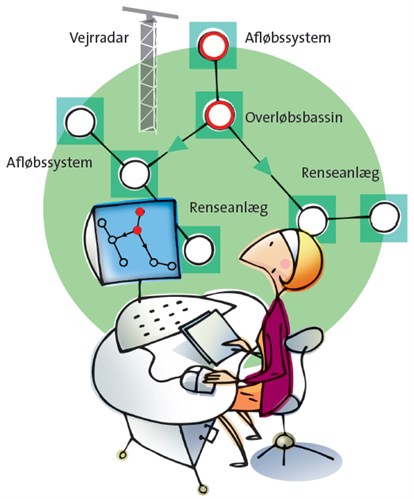Smart regulation of the sewage system
When it rains, the combined sewers fill with a mixture of stormwater and wastewater. In some situations, the sewage system is unable to cope with the large amounts of stormwater, and the contaminated water ends up elsewhere than at the treatment plant. Smart regulation of the sewage system uses weather radar, which can predict how to best utilise the capacity of the sewage system one to two hours in advance of a rainfall event. This means the utility companies have time to adjust both the sewer system and the treatment plant to the upcoming load. The system is adjusted by opening and closing gates, so that exposed areas are protected, or by readying pumps for sending stormwater to the parts of the sewer system that have most capacity. At the same time, capacity at the treatment plant is adjusted to accommodate a higher flow than usual. This reduces the risk of flooding and the amount of sewage water that is discharged untreated to the receiving water body. At the same time, the system makes sure that the water is discharged to areas where it makes the least damage.
This smart regulation technology is new and has been developed and tested collaboratively by Avedøre Wastewater Services, the Lynettefællesskabet treatment plants, HOFOR and Krüger. This collaboration has taken place in the METSAM project ('environmentally efficient technology for intelligent coordinated control of the wastewater system').

Foto: METSAM
Senest redigeret:
05-02-2014